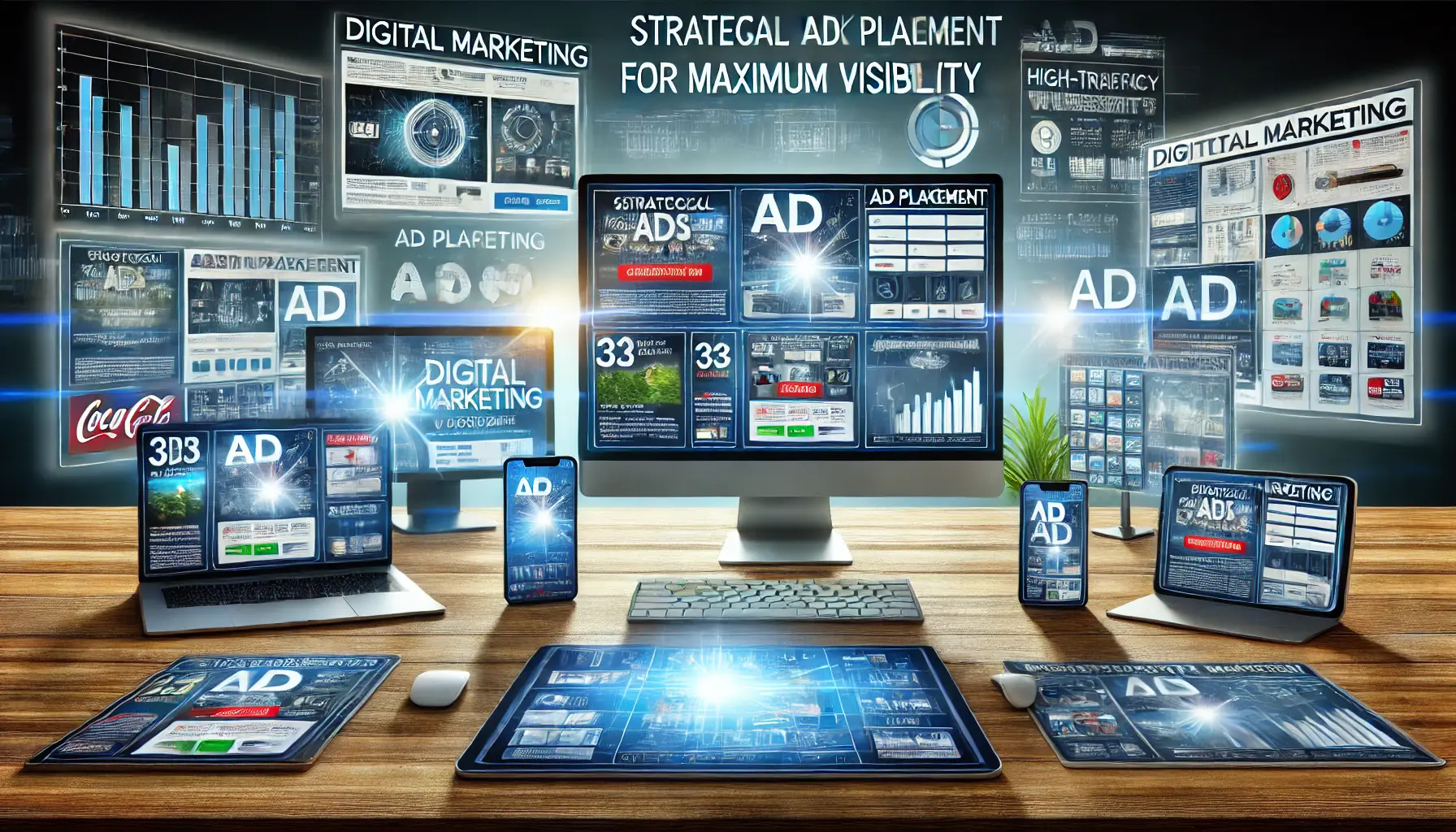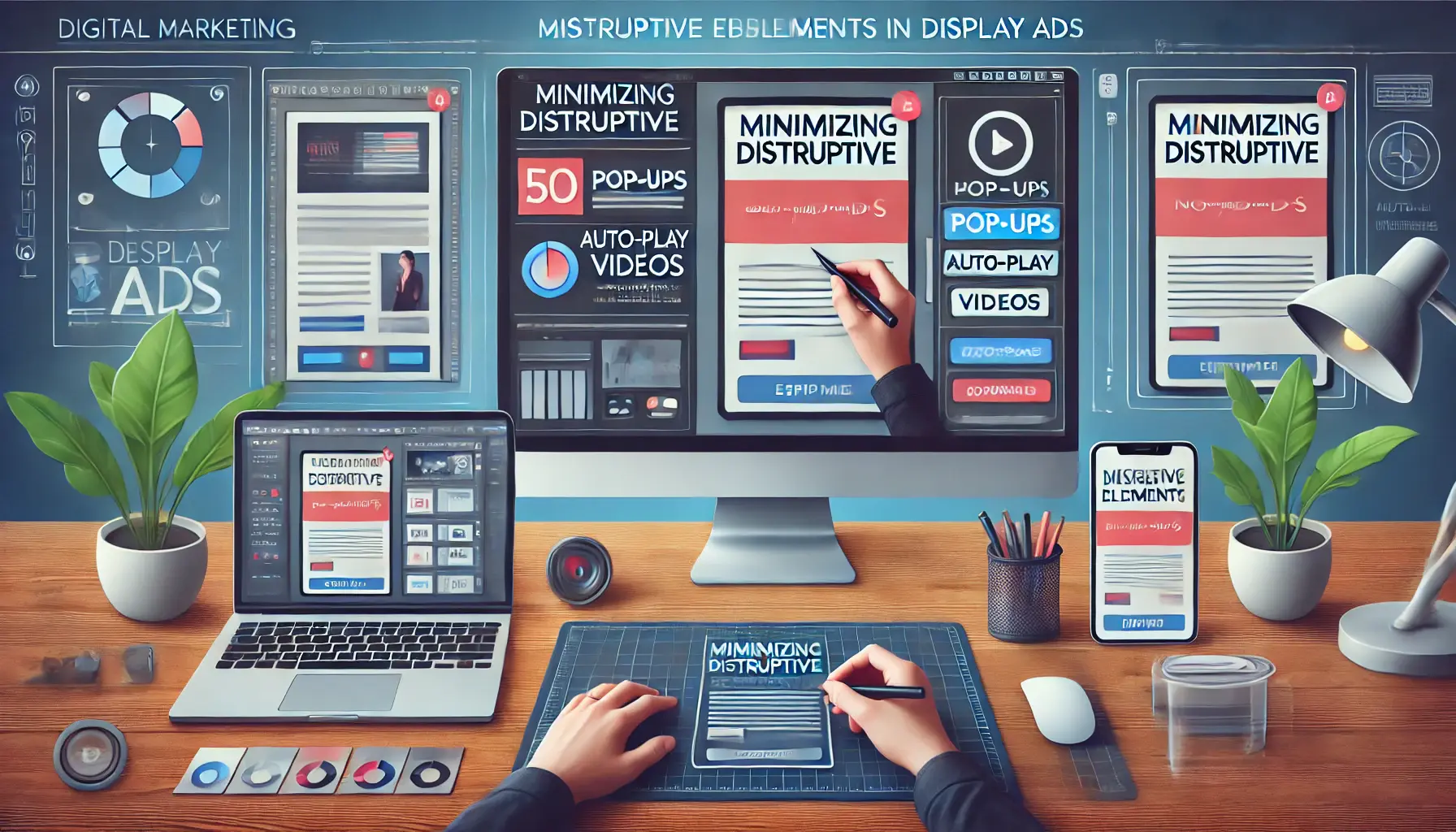Display advertisements are the cornerstone of digital marketing, helping businesses bridge the gap with their audiences in a visually captivating manner.
However, the success of display ads often relies on one key factor: user experienceRefers to the overall feelings and satisfaction a user has when interacting with a product or service..
A well-designed display ad not only captures attention but also ensures a seamless interaction that leaves a positive impression.
In this article, we will explore how improving user experience in display ads can lead to better engagement, higher click-through rates, and ultimately, more conversions for your campaigns.
Understanding User Experience in Display Ads
User experience, in short, refers to the feelings one experiences when interacting with an advertisement or digital content.
For display ads, good UX translates into simplicity, relevance, and ease of use for the audience.
Poor user experience, on the other hand, can lead to frustration, ad fatigueA condition where users become tired of seeing the same advertisement repeatedly, leading to reduced engagement., and even brand aversion.
But what makes a display ad truly user-friendly?
At its core, user experience in display ads is about creating a smooth and enjoyable journey for viewers.
It’s not just about flashy visuals but about delivering value, respecting the viewer’s time, and ensuring the ad complements the platform it appears on.

Exploring the essence of user experience in digital advertising through modern digital interactions.
What is User Experience in Digital Advertising?
User experience in digital advertising is the design and implementation of ads in a way that optimizes engagement while minimizing disruption.
It’s about putting the audience first by understanding their preferences and behaviors.
When ads align with user needs, they perform better and leave lasting impressions.

Highlighting the importance of user experience in driving engagement and success in display ads.
Why User Experience Matters in Display Ads
Good user experience can be the difference between a skipped ad and a clicked one.
Here’s why:
- Increased Engagement: Ads resonating with users capture their attention and encourage interaction.
- Better Conversion Rates: A seamless UX leads to higher chances of users taking the desired action.
- Brand Loyalty: Positive experiences build trust and reinforce brand credibility.

Illustrating the key elements of user-friendly display ads through clean design and clear messaging.
Key Elements of User-Friendly Display Ads
Creating user-friendly display ads involves several key elements:
- Clear Messaging: The message should be concise and relevant to the audience.
- Attractive Visuals: Use high-quality images or graphics that align with your brand identity.
- Call-to-Action (CTA): Ensure the CTA is prominent and actionable, guiding users on the next steps.
- Mobile Optimization: With a majority of traffic coming from mobile devices, responsive design is crucial.

Visualizing the consequences of poor user experience on display ad performance, with negative outcomes like frustration and disengagement.
Impact of Poor User Experience on Ad Performance
Ignoring user experience can have several negative impacts:
- Low Engagement: Intrusive or irrelevant ads are easily ignored by users.
- High Bounce Rates: Poorly designed ads can drive users away from landing pages.
- Negative Brand Perception: Disruptive or irritating ads can harm your brand’s reputation.
Understanding and emphasizing user experience in display advertisements is no longer a trend but a necessity in today’s competitive digital space.
By focusing on UX, you can create ads that resonate with your target audience and drive meaningful results.
Good UX in display ads ensures simplicity, relevance, and ease of use for the audience, making ads more engaging and effective.

Illustrating the process of improving ad visuals to enhance user engagement through high-quality design and vibrant creativity.
Enhancing Ad Visuals for Better Engagement
Visual appeal plays a pivotal role in the success of display ads.
In a digital world brimming with content, your ad’s visuals are often the first and sometimes the only chance to grab a viewer’s attention.
But creating visually engaging ads goes beyond aesthetics—it’s about aligning the design with user expectations, brand identity, and platform requirements.

Depicting the creative process of choosing eye-catching visuals for display ads to grab attention and engage users.
Choosing Eye-Catching Visuals for Display Ads
The choice of visuals can either make or break your ad.
Making your ads truly appealing involves:
- High-Quality Images: Avoid blurry or pixelated visuals. High-quality, professional-grade images and graphics build credibility for your ad.
- Align with Brand Identity: Use brand colors, fonts, and themes for a cohesive look that reinforces brand recall.
- Include Relevant Imagery: Choose visuals aligned with the ad’s message and target audience.

undefined
Using Colors and Fonts to Improve Readability
The right use of colors and typography can significantly enhance the readability and appeal of your display ads:
- Choose Contrasting Colors: Ensure the text is easily readable against the background.
- Stick to Readable Fonts: Use clean, sans-serif fonts that are easy to read at a glance.
- Limit Color Palettes: Avoid overwhelming users with too many colors; stick to 2-3 complementary shades.

Illustrating the importance of responsive design in display ads, ensuring seamless viewing across different device screens.
Importance of Responsive Design in Display Ads
With users accessing content across various devices, responsive designA design approach ensuring content adapts seamlessly to different screen sizes and devices. is essential for display ads.
This means:
- Adapt to Screen Sizes: Your ad should look great on desktops, tablets, and smartphones without losing visual quality.
- Maintain Aspect Ratios: Ensure the design is scalable and retains proportions and clarity across devices.
- Leverage Platform Guidelines: Follow ad platform specifications to avoid cropping or distortion.

Depicting the process of avoiding visual clutter in ad creatives by using minimal design elements and clear spacing.
Avoiding Visual Clutter in Ad Creatives
Overloading ads with information or design elements can deter viewers.
Instead:
- Focus on Simplicity: Limit the number of elements to keep the design clean and focused.
- Use White Space: Allow elements to breathe, making the ad look professional and inviting.
- Prioritize Key Messages: Highlight essential information and CTAs without overwhelming the user.
Enhancing ad visuals is not just about making them look good—it’s about creating a balance between aesthetics and functionality.
When done right, visually appealing display ads can capture attention, engage users, and drive meaningful actions.
Ad visuals should balance aesthetics with functionality, ensuring they capture attention while aligning with user expectations and platform guidelines.

Illustrating the optimization process of ad placement and targeting using data analytics and audience segmentation.
Optimizing Ad Placement and Targeting
Ad placement and targeting are crucial factors in maximizing the effectiveness of display ads.
Proper placement ensures your ads are seen by the right audience at the right time, while precise targeting enhances relevance and engagement.
Together, these strategies can significantly improve the return on investment (ROI) of your advertising campaigns.

Illustrating the importance of strategic ad placement across platforms for maximum visibility in digital marketing.
Strategic Ad Placement for Maximum Visibility
The right ad placement ensures maximum exposure.
Here are some effective strategies:
- Choose High-Traffic Platforms: Place your ads on websites, apps, or platforms with a large and relevant audience base.
- Leverage Contextual Placement: Position your ads on content that aligns with your product or service.
- Optimize Above-the-Fold Ads: Place ads in positions that are visible to users without requiring them to scroll through a page.

Illustrating the process of leveraging audience segmentation for more relevant and targeted ad campaigns.
Leverage Audience Segmentation for Relevance
Effective targeting begins with a thorough understanding of your audience.
Segment your audience based on:
- Demographics: Use factors such as age, gender, income level, and education to create ads tailored for specific groups.
- Interests and Behaviors: Analyze user preferences and online activities to deliver more relevant content.
- Geographic Location: Target users based on their location to run regional or localized ad campaigns.

Illustrating how contextual targeting enhances user experience by delivering highly relevant ads based on the content being viewed.
Contextual Targeting and Its Role in User Experience
Contextual targeting focuses on displaying ads based on the content users are currently engaging with.
This approach enhances user experience by ensuring ads are relevant and non-intrusive:
- Align with Content Themes: Ads should match the theme or topic of the webpage or app.
- Avoid Irrelevant Ads: Mismatched ads can frustrate users and reduce credibility.
- Boost Engagement: Relevant ads increase the likelihood of clicks and conversions.

Illustrating the process of balancing ad frequency and repetition to avoid user fatigue and maintain engagement.
Balancing Frequency and Repetition to Avoid Fatigue
Repeated exposure to an ad can reinforce brand awareness, but excessive repetition may lead to ad fatigue.
To maintain the right balance:
- Set Frequency Caps: Limit the number of times users see the same ad within a given timeframe.
- Rotate Ad Creatives: Use multiple versions of your ads to keep user interest alive.
- Monitor Performance Metrics: Track engagement and adjust strategies based on user responses.
With a deep understanding of your audience, optimizing ad placement and targeting becomes more effective.
A strategic approach to delivering relevant content ensures your ads resonate with your target audience and maximize your campaign’s impact.
Strategic ad placement and precise targeting ensure your ads reach the right audience at the right time, maximizing relevance and ROI.

Illustrating the process of improving ad load times and ensuring accessibility for all users across devices.
Improving Ad Load Times and Accessibility
Ad load time and ad accessibility are key to a positive user experience.
Slow-loading ads may frustrate users, which reduces the effectiveness of a display ad through higher bounce ratesThe percentage of users who leave a website after viewing only one page without taking any further action. and less engagement.
Similarly, not making an ad available to all users, including those with disabilities, may limit your reach and hurt your brand.
Optimizing both of these aspects will maximize the effectiveness of your campaigns.

Depicting the negative impact of slow ad load times on user engagement, emphasizing frustration and high bounce rates.
How Slow Load Times Affect User Engagement
Slow-loading creatives have many consequences for user engagement and ad performance.
Here’s why:
- User Irritation: Ads that take longer to load disrupt the users’ browsing experience and may lead them to leave the page.
- Reduced Viewability: Ads that don’t load promptly may not be seen by users, reducing their efficiency.
- Negative Brand Perception: Slow-loading ads can create a perception of inefficiency, damaging your brand’s credibility.

Illustrating the techniques used to optimize display ad load times, ensuring fast and efficient loading on various devices.
Techniques to Optimize Display Ad Load Times
Here are some techniques to ensure that your ads load efficiently and quickly:
- Use Lightweight Formats: Compressed images and streamlined code are key to keeping file sizes low.
- Leverage Lazy Loading: Load ads only when they are in the user’s viewport to improve page performance.
- Implement Content Delivery Networks (CDNs): Use CDNs to distribute ad content across multiple servers, reducing latency.
- Minimize Tracking Scripts: Limit the number of tracking and third-party scripts that can slow down load times.

Illustrating the process of making digital ads accessible for all users, with features like screen readers and high-contrast design for inclusivity.
Making Ads Accessible for All Users
Accessibility ensures that all users, including those with disabilities, can engage with your ads.
Here’s how to make your ads more inclusive:
- Provide Alt Text: Include descriptive alt text for images so visually impaired users can understand the ad content through screen readers.
- Ensure Keyboard Navigation: Design ads that can be easily navigated using a keyboard for users with mobility impairments.
- Use High-Contrast Colors: Ensure text and visuals are readable for users with low vision or color blindness.

Illustrating the process of minimizing disruptive elements in display ads, focusing on simplicity and user-friendly design.
Minimizing Disruptive Elements in Display Ads
Disruptive elements in advertisements harm the user experience and reduce the effectiveness of ads.
To avoid disruptions:
- Avoid Auto-Play Videos: Ensure videos do not play automatically, as this can be intrusive for users.
- Limit Pop-Ups: Avoid excessive pop-ups that interrupt the user’s browsing experience.
- Focus on Smooth Transitions: Use subtle animations and transitions to enhance engagement without overwhelming users.
Improving ad load times and accessibility is not just about performance; it’s about respecting your audience’s time and needs.
By optimizing these aspects, you can deliver ads that complement user experience, improve engagement, and strengthen your brand reputation.
Slow-loading ads and inaccessible content can frustrate users and limit your campaign’s reach, emphasizing the need for optimization.

Illustrating the use of analytics to refine user experience, focusing on data-driven decisions and ad performance insights.
Using Analytics to Refine User Experience
Analytics play a crucial role in enhancing the user experience of display ads.
By monitoring and analyzing key performance metrics, you can gain valuable insights into how users interact with your ads and identify areas for improvement.
Data-driven decision-making enables you to optimize your campaigns for better engagement, higher conversions, and increased ROI.
Illustrating the process of tracking user interactions with display ads, using analytics and engagement metrics.
Tracking User Interaction with Display Ads
The key to understanding how users are interacting with your ads lies in measuring their effectiveness.
Key metrics to track include:
- Click-Through Rates (CTR): The percentage of users who click on your ad after viewing it.
- Viewability Metrics: Understand whether your ads are being viewed by users and for how long.
- Engagement Metrics: Monitor user interactions, such as hovering over the ad or playing embedded videos.

Depicting the process of analyzing click-through rates and bounce rates to assess ad performance and user engagement.
Analyzing Click-Through Rates and Bounce Rates
Click-through rates (CTR) and bounce rates provide a clear picture of your ad’s performance:
- High CTR: Indicates that your ad is engaging and relevant to the audience.
- Low Bounce Rates: Suggest that users are staying on your landing page and exploring your content.
- Identifying Weak Points: Use this data to refine ad creatives and optimize landing pages.

Depicting the process of using user feedback to refine ad design, with multiple devices displaying updated ads based on user input.
Incorporating User Feedback into Ad Design
User feedback is a valuable resource for improving your ads.
Consider the following approaches:
- Conduct Surveys: Ask users about their preferences and experiences with your ads.
- Analyze Reviews and Comments: Gather insights from user feedback on your ads and landing pages.
- Test New Ideas: Use feedback to experiment with new designs, messages, or formats.

Illustrating the process of continuous testing and iteration in digital marketing, focusing on ad optimization through A/B testing and data analysis.
Continuous Testing and Iteration for Improvement
A/B testing and regular iterations are important for maintaining ad performance.
Key steps include:
- Test Variations: Test different versions of your ad to determine which one performs best.
- Monitor Results: Analyze performance metrics to identify trends and insights.
- Implement Changes: Apply the results to refine your strategy and improve user experience.
By effectively leveraging analytics, you can build data-driven campaigns that ensure excellent user experiences and deliver meaningful results.
It’s all about continuous learning, adapting, and innovating based on user behavior and preferences.
Analytics provide actionable insights into user behavior, enabling continuous improvement and better alignment with audience preferences.

Illustrating the process of mastering user experience in display ads through design optimization, clear visuals, and responsiveness across devices.
Mastering User Experience in Display Ads
Improving user experience in display ads is no longer optional—it is a vital aspect of successful digital marketing campaigns.
Each element, from ad visuals to targeting strategies, contributes to creating an ad that not only captures attention but also delivers value to the audience.
By focusing on user-centric strategies, you can elevate your ad performance and ensure long-term success.

Summarizing the key takeaways about optimizing user experience in display ads, focusing on data-driven insights and actionable recommendations.
Key Takeaways from the Article
The insights within this article present actionable strategies to improve user experience in display ads.
Here’s a quick rundown:
- Design with Purpose: Use attractive visuals, responsive designs, and clear messaging to create ads that engage and convert.
- Strategic Placement and Targeting: Know where and how your ads should show up, ensuring the right message reaches the right user at the right time.
- Fast Load Times and Accessibility: Ensure your ads load quickly and are accessible to all users, including those with disabilities.
- Leverage Analytics: Use data-driven insights to refine your ads continuously and align them with user preferences and behaviors.

Illustrating the importance of user experience in digital ads, with a focus on intuitive design and positive user interactions.
Why User Experience Matters
A positive user experience leads to better engagement, higher click-through rates, and increased conversions.
It also helps build trust and loyalty, reinforcing your brand’s credibility.
Display ads that prioritize user experience stand out in a crowded digital landscape and drive meaningful results.

Illustrating the next steps for improving ad campaigns, focusing on refining strategies through analytics, testing, and optimization.
Next Steps for Your Campaigns
To implement these strategies effectively, consider the following steps:
- Evaluate your current display ads to identify areas for improvement in visuals, targeting, and performance.
- Conduct regular A/B testing to refine ad creatives and placement strategies.
- Engage with your audience through surveys and feedback to understand their needs better.
- Use advanced analytics tools to monitor and optimize your campaigns continually.
Master the art of user experience in display ads to transform your marketing and drive real impact.
Apply these principles starting today, connecting with your audience better and driving your campaigns to success.
User-centric strategies in display ads lead to higher engagement, better conversions, and long-term campaign success.

Illustrating frequently asked questions related to display ad user experience, with a focus on performance, engagement, and accessibility.
Your campaigns can be managed by an agency specialized in Google Ads, check out our service page.
Display Ad User Experience: Frequently Asked Questions
User experience is a vital component of display ad creation.
Below are some of the most frequently asked questions about how to optimize user experience in display advertising, along with succinct answers to help guide your strategies.
User experience in display ads refers to how users perceive and interact with ads.
It includes visuals, load times, accessibility, and relevance, ensuring ads are engaging, non-intrusive, and value-driven.
Positive user experience boosts engagement, click-through rates, and conversions.
It builds trust and reduces bounce rates by delivering relevant, well-designed ads that respect the viewer’s time and preferences.
Key elements of user-friendly display ads include appealing visuals, responsive design, clear messaging, fast loading, accessibility for all users, and a well-placed call-to-actionA prompt in an advertisement encouraging users to take a specific action, such as 'Click Here' or 'Learn More.' that aligns with user intent.
Fast-loading ads enhance user satisfaction by avoiding delays.
Slow ads irritate users, resulting in higher bounce rates and missed engagement opportunities, ultimately affecting the overall performance of the campaign.
Analytics provide insights into user behavior by tracking click-through rates, engagement, and bounce rates.
This information helps in optimizing ads, refining targeting, and improving user experience effectively.
Accessibility ensures that all users, including those with disabilities, can interact with your ads.
Features like alt textText descriptions for images that assist visually impaired users by providing context via screen readers., high-contrast colors, and keyboard navigation enhance inclusivity and broaden audience reach.
Display ads should be updated regularly based on performance data and user feedback.
Frequent updates help maintain user interest, test new creatives, and adapt to changes in audience behavior and preferences.
Responsive design ensures ads adapt seamlessly to different screen sizes and devices, maintaining quality and usability.
This improves user experience and extends reach across desktop, mobile, and tablet platforms.
Irrelevant ads frustrate users, reduce engagement, and harm brand reputation.
Contextual targeting and audience segmentation ensure ads are relevant, increasing the likelihood of user interaction and conversions.













